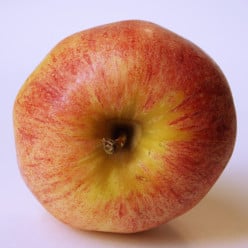X Case Anniversary, Abortion, 100,000 Children Dead
TODAY MARKS the 20th anniversary of the “X case”. On February 6th, 1992, a court order was granted to prevent a 14-year-old rape victim from travelling to England for an abortion. The order was based on Article 40.3.3 of the Constitution – the 1983 amendment which equates the right to life of the “unborn” with that of the “mother”.
Today in the Irish Times Ivana Bacik tells us that 100,000 Irish women and female children have travelled to England to terminate the lives of their unborn children, Ivana tells us that this Holocaust against unborn Irish children is a victory for women’s rights, and that these women terminate the lives of 100,000 Irish children because the pregnancies were unviable, due to a threat to the mother’s life or the mothers were victims of rape/sexual abuse, one assumes that Ivana was trying to maximise her keyword search by adding sexual abuse, as one assumes pregnancy only comes about due to rape.
Ivana does not tell us how many women committed suicide following the termination of their unborn children, in my own family two females took their own lives after travelling to England to terminate the life of their unborn children. One of my sisters-in-law told me how her unborn child was cut from her womb, sucked out by a vacuum cleaner type object and the baby’s body placed in a bucket of water until it could breathe no more. All of this as my sister-in-law watched in horror, soon after returning from England my sister-in-law hung herself, her suicide note read, “God forgive me”.
It is not for me to say what should or should not happen in relation to the health of another person, however, I do know what I have seen, and I think that people like Ivana Bacik are more concerned with their blinkered campaigns than they ever have been about the broken bodies, families and communities left behind by their leafy lane campaigns.
What is Law? Sexual Crime in Ireland, a Definitive History, FREE 3 Chapter e-Book ©
This 3 Chapter e-Book which was written by a convicted prisoner and funded by the Department of Justice in Ireland, brings together a definitive History of sexual crime in Ireland. Chapter 1 addresses the history and complexity of sexual crime in Ireland over the past 100 years. Chapter 2 addresses the role played by the media in reporting/facilitating sexual criminality. Chapter 3 examines the role of prisons as a punitive/rehabilitative response to sexual crime in Ireland.
Chapter 1
A Moral Quagmire Punctuated by Political Indifference
Sexual crimes cover a wide range of behaviour and events. These crimes are compounded by the intense emotions involved in sexual behaviour, the distortion that can be caused to an individual’s sexual identity by sexual crimes being perpetrated upon them, by the dominant sexual culture and by moral and religious dimensions (O’Mahony.1996). Particularly in the past two decades with the advent of the proliferation of media and in particular new technologies, we are more acutely aware of the many cases of sexual crime coming before the Courts and perhaps in greater number, persons claiming to have been raped and sexually abused when they were children being held in institutions of ‘care’ that were run by the Catholic Church and under the ‘supervision’ of the Irish State, have alerted us to the cruel hurt and pain that can be inflicted on such persons. West (1983) suggests that most children outgrow the negative effects of such abuse; however, those victims giving testimony to the Redress Board that was established to give financial compensation to those victims of Religious child rapists would contradict this contention.
Sexual crime in the Irish Republic is not something that has simply appeared from nowhere in the 21st Century, indeed, from the very foundation of the Irish Free State sexual crime and in particular against children was common place. Such was the scale of sexual crime against children that the Irish Government of 1930 was pushed to establish an inquiry to examine the extent of sexual crime in the newly liberated territory. The Carrigan Report [1] was chaired by Mr William Carrigan a retired Senior Council, the evidence presented to Carrigan left the committee in no doubt that child sexual abuse was systematic and wide spread. Carrigan concluded that:
There was an alarming amount of sexual crime increasing yearly, a feature of which was the large number of cases of criminal interference with girls and children from 16 years downwards, including many cases of children less than 10 years.
This observation was supported by the Police Commissioner of the Day, Eoin Duffy, who said that less than 25% of cases were being reported and then less than 15% of these cases were being prosecuted due to a host of reasons. Duffy said that from his own knowledge the number of children under 13 years of age being sexually abused was “Alarming”. It is worth noting at this point that in 2010 little had changed, at Ballyshannon Circuit Court, in County Donegal on the 18th of June 2010, a Garda told the court that a now twenty-year-old women had been raped 57 times by 22 adult men when she was 13 years old, some of those men have been successfully prosecuted. Following the publication of the Cloyne Report (13th July 2011) into child rape at the hands of the Catholic Church the Garda Commissioner had the following to say about the role of the Church and State:
The Garda Commissioner, Martin Callinan, said the publication of the Report of the Commission of Investigation into the Catholic Archdiocese of Cloyne:
This report details another difficult and sorry chapter in the story of how both Church and State authorities in Ireland responded to the sexual abuse of young people in our community. It outlines omissions and failures in the way in which complaints and allegations were addressed. The Commission did state that it was very concerned about the approach adopted by the gardaí when dealing with complaints in three cases outlined in the report.
The Garda Commissioner apologised to the victims at the heart of those cases. Mr Callinan continued:
It is a matter of regret to me that people did not receive the appropriate attention and action from the Garda Síochána to which they were entitled. The policies and structures now in place are very much victim-focused and designed to ensure that no one has a similar experience today.
Emphasising again the importance of individuals reporting sexual crime to gardaí, the Garda Commissioner said:
I want to assure the community that we have invested much time, energy and resources into ensuring that both our policies and people are effective in this sensitive and challenging area. Anyone making a complaint to gardaí will be met with sensitivity and with professionalism.
The Commissioner asked Assistant Commissioner Derek Byrne to examine the report to see whether, in addition to action already taken, any further action could be taken against the abusers referred to in the report. The Garda Inspectorate in its 2012 Report, ‘Responding to Child Sexual Abuse’, again identified significant shortcomings in the force’s investigation of sexual offences against children, the Report further views the actions of many HSE staff as less than helpful in the protection of children.
It said basic record-keeping was so poor that the official crime figures did not capture up to 65 per cent of sex crimes against children reported to the Garda in recent years.
The situation had only become apparent after the Garda was unable to supply the inspectorate with annual figures for sexual offences against children. The inspectorate requested paperwork to be checked in all 112 Garda districts. The disparity that emerged between the paper records and the Garda computer database of crime rates called into question the integrity of all child abuse figures, it said.
In almost one-third of cases, details of investigations had been entered into the Garda’s Pulse computer database, but had not been classified as criminal offences and so were missing from the overall crime figures. Guidelines for inputting crimes were not being followed and in one incident three cases involving nine injured parties had been entered as a single offence.
The inspectorate said while its latest report had only studied crime figures on child sex abuse, it would later review how the Garda recorded all crime types.
On the substantive issue of the Garda’s investigation of child sex abuse, the inspectorate noted “turf issues” – or a turf war – between the Health Service Executive and the Garda. This meant allegations of abuse were not being investigated quickly enough, which was compromising child safety. Joint action sheets were supposed to be drawn up in all child sexual abuse cases involving the HSE and the Garda so that those involved knew what aspects of an investigation they were responsible for, the inspectorate pointed out. In a sample of cases in Dublin, the plans had been completed in just 1 per cent of cases.
The inspectorate recommended a much greater degree of specialisation within the Garda in its approach to investigating the sexual abuse of children. These specialists should include detectives trained to interview child victims. This should never be left to front-line uniformed Gardaí, it said. It called for the appointment of a Garda assistant commissioner with special responsibility for child protection.
Minister for Justice Alan Shatter said the inspectorate’s report had been submitted to the government in late 2010 but legal constraints had prevented its publication. In the intervening period the State had moved to address the issues raised in the report. “While the inspectorate identified deficiencies at the time of its inspection, it also acknowledges that the Garda Síochána is addressing the issue of child sexual abuse as a top priority and that progress has been made in recent years,” he said.
The inspectorate’s report, ‘Responding to Child Sexual Abuse’, was commissioned in 2009 by then Minister for Justice Dermot Ahern. It was to examine the Garda’s approach to child sex abuse, particularly in the wake of the Murphy commission’s report into the Archdiocese of Dublin, which criticised the Garda.
The Inspectorate, which advises the Garda and government on policing policy, said there appeared to be reluctance on the part of the HSE to call Gardaí in to investigate allegations until after children had undergone therapy. This undermined subsequent prosecutions because an accused could question the integrity of evidence that emerged in therapy. It is clear that many Social Workers and other ‘professionals’ working in such cases were making career advancement by ensuring that children had well-rehearsed stories before cases were being referred to the criminal justice system, successful prosecutions are often linked to successful career advancement. The lack of more meaningful co-operation between the HSE and Garda was disappointing, particularly in light of the Garda’s excellent relations with other agencies.
The inspectorate also implied the Garda was still too deferential in its approach to investigating cases of clerical child sexual abuse. If Gardaí were being frustrated in their efforts to obtain church records they needed to apply for search warrants in the way they would during other criminal probes, it said. “It is not an acceptable option for the Garda Síochána to do nothing,” the report says. The inspectorate notes most investigations into child sex abuse should take only three months.
The Report states that delays in the recording of reports of child sexual offences result in intelligence gaps. Failure to make timely entries on PULSE (the Garda’s computerised central database) exposes children to continuing risk. Any reasonable analysis of the evidence of the failures to implement the Children First protocol between the Garda and HSE would have to conclude that there is a serious problem requiring urgent action to resolve it.
Garda investigation files were found not to contain all the papers relevant to the investigation. Some case files consisted of loose papers enclosed in an official cover. The papers were not in either chronological or other order in such files.
It is clear from Carrigan (1930) to The Garda Inspectorate Report (2012) and other sources that many police officers wanted to do what they could to prevent sexual crime and particularly against children and bring those responsible to justice; however, they faced many hurdles in their task including the power of the Catholic Church in communities all over Ireland to career driven HSE staff in the 21st Century. The findings of the Carrigan Report would not at that time be made public due to pressure from the Catholic Hierarchy and the acquiescent Government of the day. The Garda Inspectorate Report (2012) was delayed for three years as ‘professionals’ tried varies legal avenues to stall its publication and damming findings. While De Valera made speeches about the, “Laughter of happy maidens”, children were being raped to such an extent in De Valera’s own constituency that a Judge described the Assizes in De Valera’s own constituency as the “Dirty Assizes” due to the large number of child sex crimes appearing before it.
Francis Hackett who settled in Ireland in the 1920s and was a juror from 1929-37 described sitting through court proceedings that dealt in one sitting with, 20 counts of buggery, a girl who threw her new born baby from a moving train, an elderly man who sexually abused two young girls, and a young man who raped a girl who was under the age of sixteen. However, all of this information was to be confined within its own parochial parameters, the Carrigan Report (1930) would not be published as the Catholic Church did not want the inevitable bad publicity that would follow. The Catholic Church had never signed up to the democratic program and felt that they had a God sent right to do as they pleased. The Carrigan suppression is a clear indication as to how the relationship between the Catholic Church and the State functioned.
However, we now know that the Catholic Church had much more to hide than the base immorality of Ireland’s newly liberated streets. Within the new order of the Irish Free State the Catholic Church had taken control of the Education system and the much hated ‘Industrial Schools’ and the Government remained as silent partners. We now know from the Ferns, Murphy, Ryan and Cloyne Reports into child sex abuse that the Catholic Church not only allowed but facilitated those Homophiles, Hetrophiles and Paedophiles within its ranks that raped and tortured the children in their ‘care’. This was not passive facilitation but was facilitation of a most criminal nature. Known child rapists were protected while the victims were silenced, known child rapists were sent all over the world where their crimes were unknown and they simply continued to rape children. Cardinal Sean Brady, in Ireland, admitted in 2010 that he with other members of the Catholic Church, forced child victims of religious child rape to sign letters of secrecy about their ordeals.
The Limits of Liberty, presented by RTE 1, on the 31st of May 2010, tells the heart rendering story of Peter Tyrrell, who was formerly housed in Letterfrack Industrial School, 1924-32, for no other reason than that his family was poor. Peter had committed no crime; his only crime was to come from a family that was poor. Peter had in later life written many letters of complaint to the authorities complaining about the abuse of children by the Religious Orders but his calls for justice fell on deaf ears. Peter felt that he was not believed and in 1967 feeling betrayed and isolated, Peter dosed himself with petrol on Hampstead Heath in England and took his own life. It took twelve months for his body to be identified. We now know that Peter was telling the truth, that truth has been established by a 1000 voices that echoed for so long in those places of evil. The rape and torture of children at the hands of Catholic Priests, Christian Brothers and a host of other Devils in Skirts was systematic and deliberate, these Devils were not held to account by their political bedfellows. Peter Tyrrell had fought against the Nazis in WW11 and had been a prisoner of war; he said in one of his letters that the abuse he suffered at the hands of the Catholic Church was much greater than anything he had been subjected to by the German Guards or Gestapo at his prisoner of war camp.
The area of sexual crime that has evoked most public disquiet, is that perpetrated against children, yet the Irish Republic in 2011 has no mandatory reporting of child rape or abuse. However, following the publication of the Cloyne Report in 2011 An Taoiseach, Fine Gael’s Enda Kenny TD said that his Coalition Government would introduce legislation to make the concealment of child rape/abuse an offence. Much of the sexual crime committed against children, although not exclusively, involves seduction and entrapment. Contrary to public discourse, those persons in our community who commit acts of sexual crime against children are not a homogeneous group, this category of offender normally and conveniently referred to as paedophiles (sexual attraction to children) is made up of Homophiles (same gender sex abuse), Hetrophiles (opposite gender sex abuse), Bi-sexual paedophiles (either gender, sex abuse), Homosexual epebopiles (sexual abuse of same gender adolescents) and so forth (Casey.1999). There are two reasons that I make this point, First: so that from the very out set of this book, it is clear, that those who commit sexual crimes against children cannot be set outside mainstream society as an easily identifiable group. It may well suit the liberal agenda to castigate this group of people as being non-homosexual, non-lesbian or non-decent middle class liberal, just as it may suit the right wing hard line agenda, to suggest that this is a small deviant group outside of the conservative elite of politicians, Churchmen, Judges, Barristers, Police officers, Army officers, Solicitors, Business Executives and so forth, however, they are all that and more (Operation Amethyst, The Irish Times.2002, Phoenix.2002, Operation Magenta, Ferns, Murphy, Ryan and Cloyne Reports, Irishtimes.com). Secondly and neatly summed up by Brenda O’Brien:
Demonising child abusers and actingOkay....
All of this is too long for me to read right now. But I did read the first paragraphs about abortion, and I say Right ON irish for this info.
It reminds me of "Jane Roe" here in the U.S.A. whose case started huge controversy and most of the activism for abortion. Her case was built on lies and should've been thrown out of court, and then later she herself became a pro-Life activist because she realized that abortion is wrong.
God save the children who've become pawns in the political game.
There're some cases where politicians/government have no business in our lives. Same sex marriage (the state should be able to grant a marriage license to anyone regardless of sexual preference) and abortion are a couple of examples.
Related Discussions
- 1
Cloyne Report into the Rape of Children by the Catholic Church in Irel
by theirishobserver. 14 years ago
Today 13th July 2011 or 7/13/2011 the Cloyne Report has been published in Ireland, this report deals with the Rape of children at the hands of the Catholic Church and the cover up of those rapes by the Church and State. The document below sets this report into the historical context of child rape...
- 6
Child Abuse in Ireland, Investigative Failings
by theirishobserver. 13 years ago
The Garda Inspectorate in its 2012 Report, ‘Responding to Child Sexual Abuse’, again identified significant shortcomings in the force’s investigation of sexual offences against children, the Report further views the actions of many HSE staff as less than helpful in the protection of children.It...
- 22
Root cause for child abuse in catholic church
by emdi 15 years ago
It was with great distress that I read the news about the child abuse scandal in catholic church. What do you think is the root cause of the problem? what change do you suggest to prevent further crimes?
- 10
what can i do about sexual abuse that happened years ago, and give my fiance the
by annaphilo 13 years ago
what can i do about sexual abuse that happened years ago, and give my fiance the answers he needs.I was molested/raped from the age of 9 until i was 19. i am 24 years old now, and have a little...girl of my own, and i believe he's done it to her to. she was 2 years old and complaining about papaw...
- 34
Should Catholic Priests Be Allowed To Molest Children?
by DennisBarker 14 years ago
I havn't found anything in the bible which says yes, so has the catholic church got a well documented history of covering up child abuse?
- 2
Social Workers Ireland
by theirishobserver. 14 years ago
Senior Social Worker Speaks Exclusively to TheIrishObserver.blogspot.comToday The Irish Observer.blogspot.com has been given the opportunity to speak exclusively with a now recently retired Senior Social Worker who says that she could not speak out while employed by the HSE and could still face...








